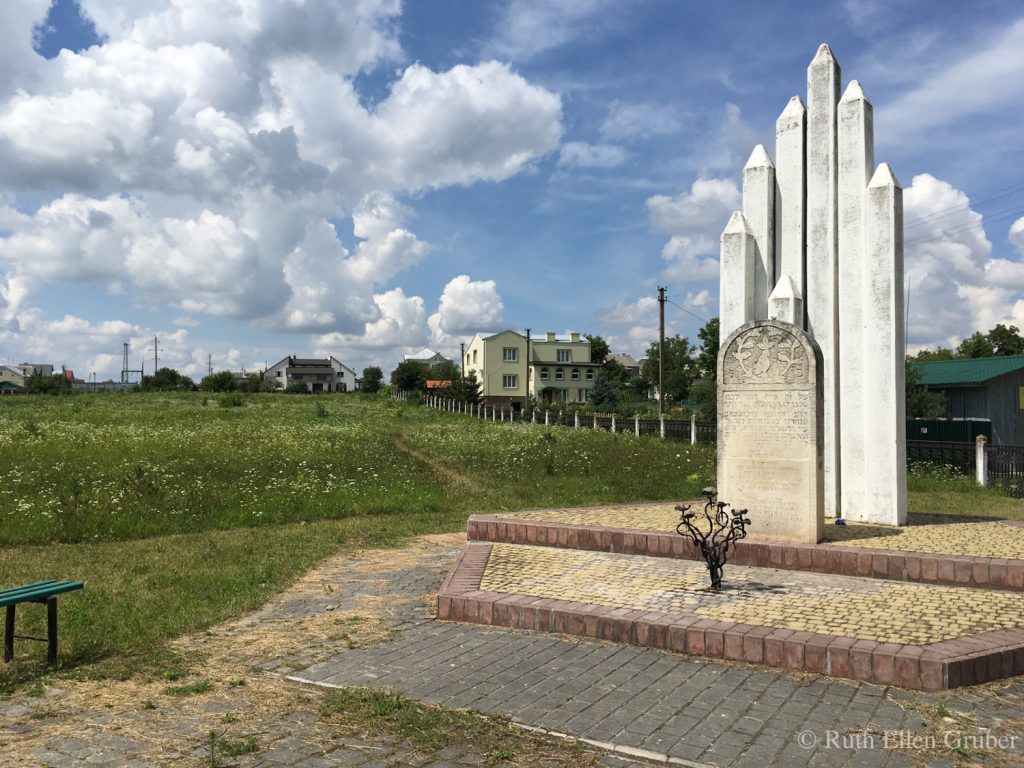Nash Holos: Zolochiv

Zolochiv, a town located 60 kilometers east of Lviv, was at one time a thriving Polish-Jewish-Ukrainian town. Then, in just three years, its Jewish population perished in the Holocaust.
The Jewish presence in Zolochiv dates back to 1565. For centuries, Zolochiv was home to numerous artisans, tradesmen and notable rabbis. They lived throughout the city and were instrumental in its political, economic, and social development.
With the outbreak of the Second World War, large numbers of Jewish refugees fled from western Poland to Zolochiv. By then the town was occupied by the Soviets, who deported many of the refugees to the interior of the Soviet Union and conscripted young men into the Red Army. At that time an estimated 10,000 Jews and another 10,000 Poles and Ukrainians lived in Zolochiv.
Before the Soviets retreated in 1941, the NKVD, Stalin’s secret police, murdered several hundred civilians and buried the bodies in four mass graves. Many were Ukrainian nationalists, along with some Jews and Poles. After the Nazis occupied Zolochiv, they blamed Jews for the murders and a pogrom ensued.
In just three days, more than 3,000 people were killed, 2,000 of them in front of the Zolochiv Castle, the site of the NKVD’s earlier mass murder.
In December1942, the Nazis established a ghetto, which housed somewhere between 7,000 to 9,000 Jews. By April 1943, most of the Jews had all been taken outside the city, shot, and buried in mass graves — many of them still alive.
In August 1943, 2,700 Jews were herded into cattle cars and sent to the Belzec death camp.
In a second mass expulsion in November 1943, 2,500 more Jews died.
Many Jews went into in hiding, but were hunted down and killed.
On July 18, 1944, the Red Army liberated Zolochiv. By the end of the war, there were no more than 200 Jews left in the city. Most fled immediately.
In a 2006 New York Times article, a Holocaust survivor who was a small child, recalled that horrific time.
“We survived through the unimaginably courageous acts of good people. Millions around us were passive; hundreds of thousands collaborated. But thousands of Ukrainians helped Jews survive. Among those were Metropolitan Andrei Sheptytskyi, of the [Ukrainian] Greek Catholic Church, his brother Klementi, and the good teacher Mikola Dyuk who hid us in the unlit attic and then a storeroom of his village schoolhouse for 15 months.”
The writer took his family to Zolochiv, to remember, to put the horrors of the past behind them and to commemorate the Jewish life that once thrived in Zolochiv.
The Hasidic cemetery in Zolochiv was created in the second half of the 16th century. The last known Jewish burial was in June 1941. During the Second World War the cemetery was vandalized, and the Stone Synagogue, built in 1724, was destroyed.
Today the local municipality now owns the property. There are no visible tombstones, and no mass graves. The borders of the cemetery have shrunk considerably, as some of the land was appropriated for commercial and industrial use.
In 1995, Jewish community groups from across Ukraine and the diaspora fixed the walls and gates. Now, occasionally organized individual tours and Jewish private visitors stop by.
On July 23, 2006, Jewish and Ukrainian community leaders dedicated memorials to the 14,000 Jews of Zolochiv who perished during the Holocaust. These include a monument in the Zolochiv cemetery and a plaque on Zolochiv castle. A memorial plaque commemorating those killed by the NKVD prior to the Nazi invasion was also unveiled.
Despite the horror of its recent history, Zolochiv is a beautiful town. Please come visit, remember, and celebrate the memory of what once was, and what we hope will once again be in the future.
Narrated by Renata Hanynets, Lviv
Listen to the program here.
Ukrainian Jewish Heritage is brought to you by the Ukrainian Jewish Encounter (UJE), a privately funded multinational organization whose goal is to promote mutual understanding between Ukrainians and Jews. Transcripts and audio files of this and earlier broadcasts of Ukrainian Jewish Heritage are available at the UJE website and the Nash Holos website.
Photo: Ruth Elen Gruber



















